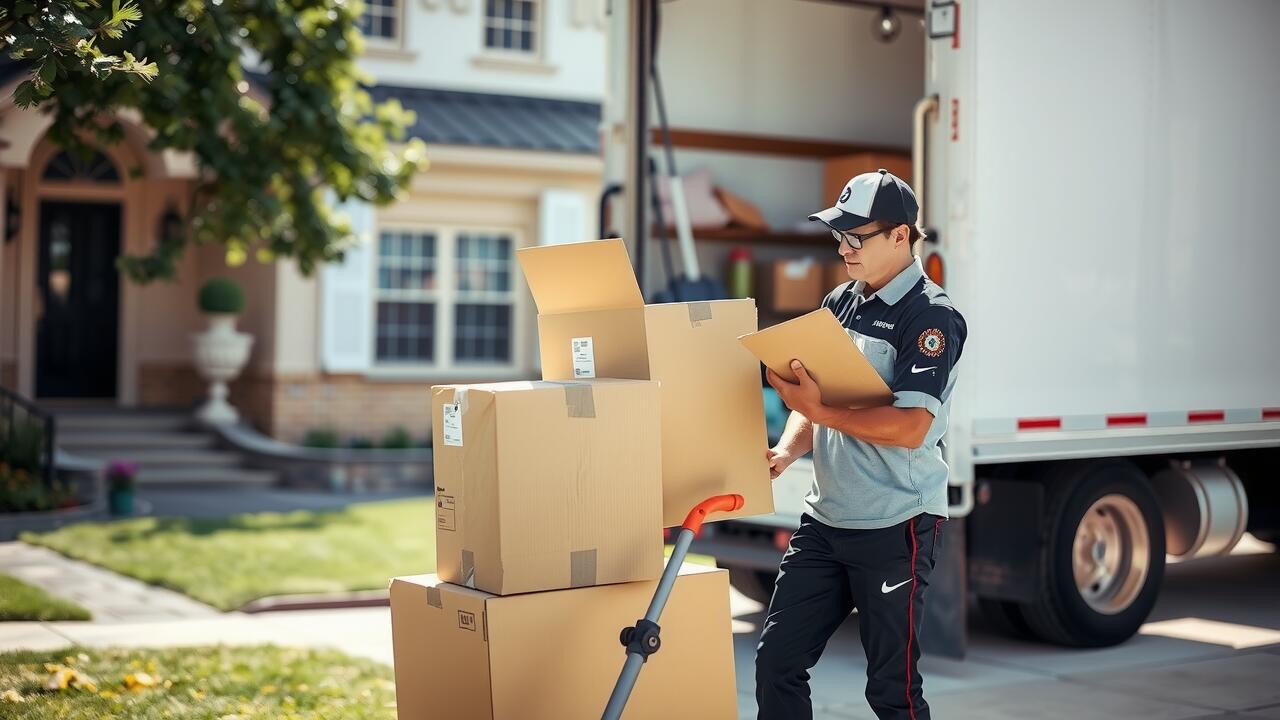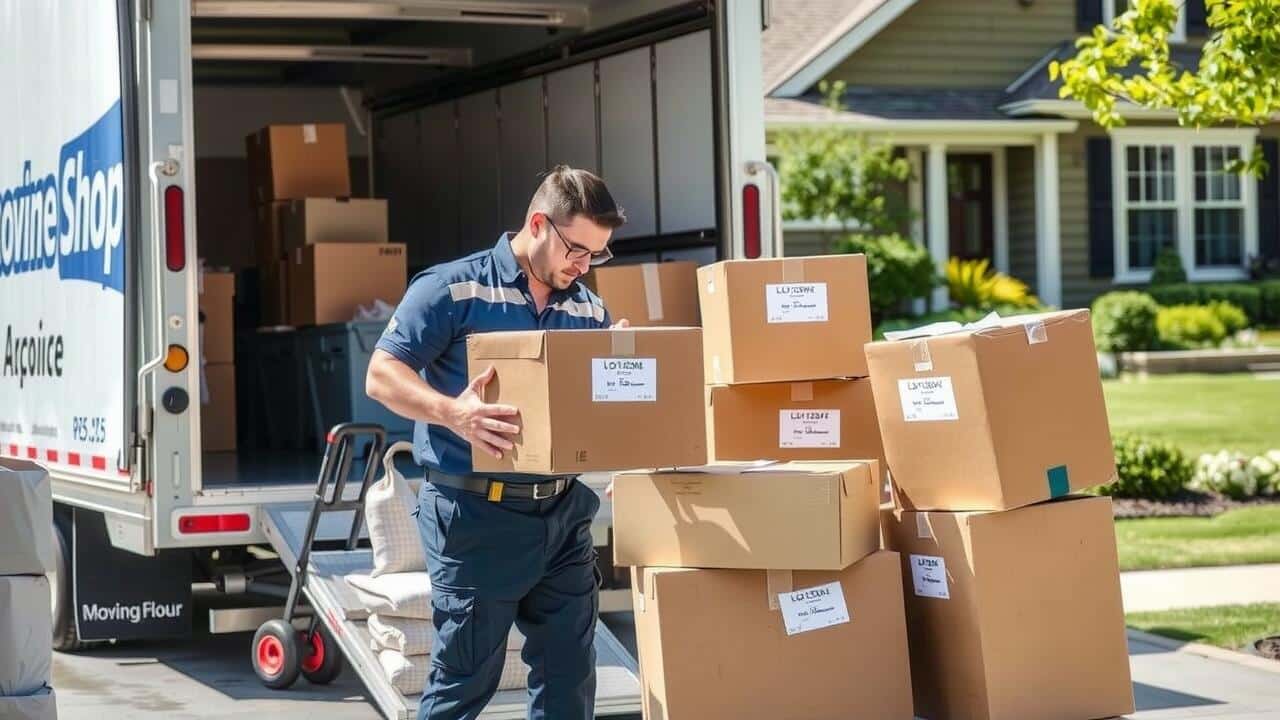
Table Of Contents
Packing Strategies for Efficiency
Efficient packing is essential for any commercial move, especially during a transition like Commercial Moving in Oklahoma, United States. Start by categorizing items based on their function or room assignments, which simplifies the packing process. Use labeled boxes to easily identify contents, ensuring that important documents and equipment are kept together. This organization minimizes disruption and facilitates faster unpacking in the new location.
When packing fragile items, prioritize the use of appropriate cushioning materials. Bubble wrap, packing peanuts, or even old newspapers can help protect delicate equipment and supplies. Additionally, consider creating a packing timeline, allowing ample time for each phase. This approach helps to avoid last-minute packing, reducing stress and ensuring a smoother transition during the commercial move.
Utilizing Proper Packing Materials
Selecting the right packing materials is crucial for a successful commercial move in Oklahoma, United States. Quality boxes, cushioning materials, and durable tape can make a significant difference in protecting your items during transit. It is wise to use sturdy boxes that can support the weight of your equipment and supplies. Additionally, bubble wrap, packing peanuts, and foam inserts provide the necessary cushioning to prevent damage.
Labeling each box clearly with its contents and destination will help streamline unpacking at the new location. Using color-coded labels can help staff quickly identify which items belong in specific areas. Ensuring that fragile items are packed separately and securely will further safeguard against breakage. Proper packing materials contribute to a more organized and efficient moving process, facilitating a smoother transition to your new space.
Setting Up Your New Location
When setting up your new location after a commercial move, prioritizing functionality is crucial. Consider the workflow of your team as you design the layout. Arrange workstations to encourage collaboration and ensure easy access to shared resources. Keeping the flow of movement in mind will help reduce congestion and improve productivity. Each area should be tailored to meet specific operational needs while allowing for flexibility as your business evolves.
Effective communication during the setup phase can significantly impact your transition. Inform your staff about the new layout and the rationale behind it. This ensures everyone understands their roles in the new space. Conducting a walk-through can help familiarize employees with their surroundings. Investing time in this step can lead to a smoother adjustment period, essential for businesses navigating Commercial Moving in Oklahoma, United States.
Designing the Layout for Optimal Functionality
When designing the layout of your new commercial space, prioritize how the flow of work will occur. Consider the interrelations between departments and the movement of both employees and clients. Arranging desks and workstations to promote collaboration can enhance productivity. Ensure that frequently used areas are easily accessible while providing separate zones for focused tasks to minimize distractions.
In addition to optimizing the work environment, pay attention to the practical aspects of the design. Incorporate adequate storage solutions to keep essential supplies organized and within reach. Position equipment such as printers and copiers strategically to minimize noise disruption. An effective layout not only supports operational efficiency but also contributes to employee satisfaction during and after the transition involved in commercial moving in Oklahoma, United States.
Managing Downtime
Managing downtime effectively is crucial during a commercial move in Oklahoma, United States. Businesses should develop a clear plan to minimize disruptions and maintain operations as much as possible. Prioritizing tasks allows teams to focus on essential activities while balancing transition efforts. Implementing remote work or staggered schedules can help keep the workforce engaged despite the challenges posed by the move.
Establishing strong communication channels is vital during this period. Keeping employees informed about timelines and expectations fosters a sense of stability amidst the transition. Additionally, consider informing clients about potential delays to maintain transparency. This proactive approach builds trust and ensures that everyone involved understands the moving process and its implications for business continuity.
Planning for Business Continuity
When preparing for commercial moving in Oklahoma, United States, it’s crucial to prioritize business continuity to minimize disruptions. Creating a detailed transition plan can help streamline operations during the move. Identify critical tasks that must continue without interruption and establish a timeline for each phase of the relocation. Inform your staff about their roles throughout the process to ensure everyone is aligned with the company’s goals during this transition.
Additionally, consider the temporary adjustments that may be necessary during the move. Implement strategies such as maintaining communication with clients and suppliers to keep them informed of your status. Setting up a remote work option for employees can also provide flexibility while the transition is underway. Prioritizing these aspects can significantly reduce downtime and maintain service levels to the best extent possible.
FAQS
What are the best packing strategies for a smooth commercial move?
The best packing strategies include organizing items by category, labeling boxes clearly, and creating an inventory list to keep track of all belongings.
What packing materials should I use for my commercial move?
It’s essential to utilize sturdy boxes, bubble wrap, packing peanuts, and tape. Additionally, consider using specialty boxes for fragile items and furniture blankets for larger pieces.
How can I design the layout of my new location for optimal functionality?
To design an effective layout, consider the flow of operations, accessibility for employees and clients, and the placement of essential equipment. Involve your team in the planning process for valuable feedback.
What steps can I take to manage downtime during a move?
To manage downtime, develop a detailed moving schedule, communicate with employees about their roles during the transition, and plan for temporary workspace solutions to minimize disruption.
How can I ensure business continuity during the moving process?
To ensure business continuity, create a comprehensive plan that includes backup systems, temporary contact methods, and clear communication with clients about any changes that may affect services during the move.
